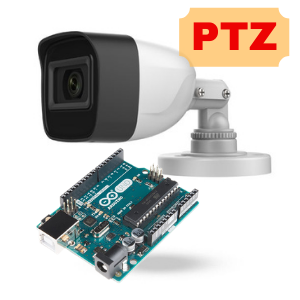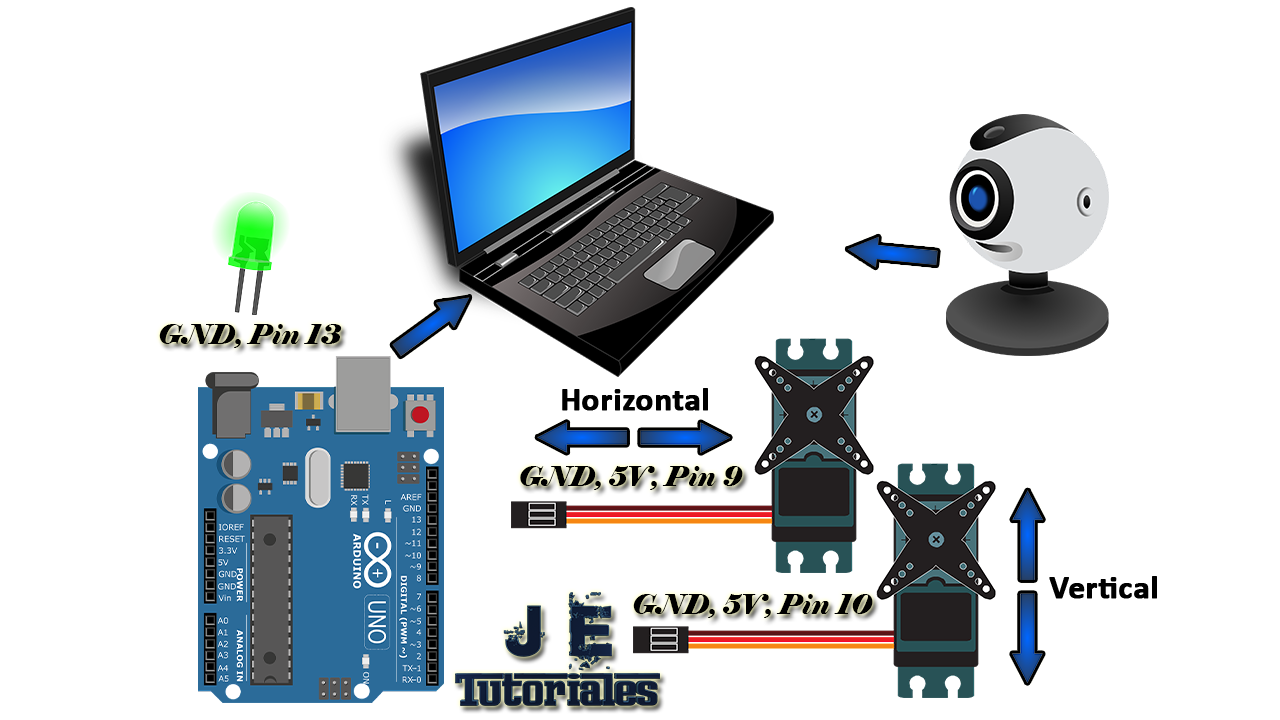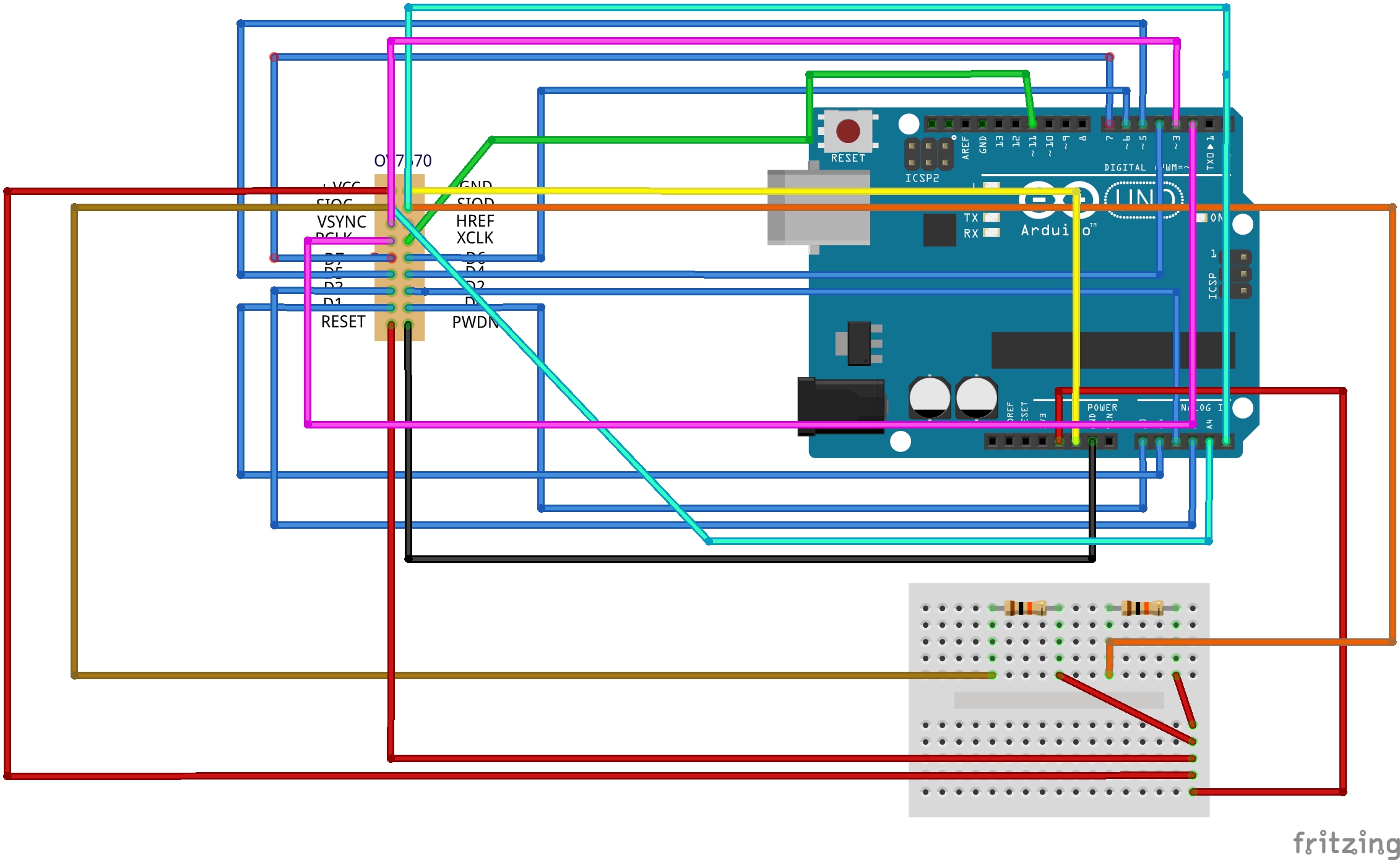An Arduino board with a camera opens up tonnes of possibilities. Today, we have compiled for you a list of camera modules compatible with Arduino which can easily be used in DIY projects. So check out this list of 10 best Arduino cameras that you can buy right now. Have a look!
Waveshare OV9655 Camera Module ($13.99)
OV9655 features a 1.3 MP camera. This is quite less for normal projects but can be readily used for projects that can use this pixel resolution. The camera can take photos as well as record videos.
Available here.
Apply power to your Arduino Uno board and open the Serial Monitor in the Arduino IDE. Arduino will output the analog value sent by the module to the serial monitor. If the value reaches the threshold setpoint set by VR1, the built-in LED of the Arduino will also light-up. Adjust the threshold by turning VR1. Mar 13, 2013 El programa de processing entonces se comunica y trabaja con Arduino; pero la cam esta conectada directamente a un USB port del computer. No he utilizado el cam shield precisamente por eso porque no se como visualizar el video en la computadora; pero bueno quizas ya lo han hecho aunque no lo hayamos encontrado nosotros.
OV7670 Camera Module by Atomic Market ($10.99)
This camera module is also compatible with Arduino. It features 300 Kilo pixel lens specially designed for image acquisition and processing applications. It is based on transistor logic communication interface and hence, very convenient to connect with Arduino controller, able to read image and data via UART serial port, and then perform some image processing.
- This bot was built to demonstrate conversation, gesturing, combined with an ability to move around in a crowd using 12 sonars. An interactive robot that anyone can make! Otto is very easy to 3D print and assemble, walks, dances, makes sounds and avoids obstacles.
- Programa Msr 2006 Com Acr38u Tacx Trainer Software 4 Advanced Crack Delphi 2015 R3 Activation Download Gangstar Vegas In Tencent How To Validate Signature In Pdf Camara Arduino Programa Ai Technology Lab Hku Sonia Leja;leja Download Mp3 Superantispyware Professional.
- Camara Arduino Programa Ibanez Andy Timmons Wiring Broncho Bad Behavior Download Telecharger Pinball Game For Pc Human-centric Interfaces For Ambient Intelligence.pdf Imperator Rome Download Jquery Else If Dash Cam Forum Container.
Available here.
Arducam MT9D111 Camera Module ($9.99)
MT9D111 has an auto focus lens and features numerous function on the go for image enhancement and correction. It is 2MP camera with a flex cable. It also features automatic Xenon- and LED-type flash support, fast exposure adaptation, on-chip 10-bit analog-to-digital converter and two-wire serial interface. It also comes with an adapter board.
Available here.
Arducam MT9M001 Camera Module ($16.79)
Arducam MT9M001 camera module features a maximum resolution of 1280 x 1024 at 30 fps. Easy to integrate with Arduino, this is Microsoft XBox 360’s original monochrome infrared camera module. You need to poke around a little bit to find documentation on this.

Available here.
Arducam OV5642 Camera Module ($29.99)
This Arducam camera module can be interfaced with Arduino, Maple, DSP and FPGA platforms. It also supports second camera clip sharing ISP(Image Signal Processor) and MIPI( Mobile Industry Processor Interface) interface. The maximum megapixels it can support is 5. It also supports video and snapshot operations. Works well at night too!
Available here.
Arducam OV5642 Camera Module ($42.99)
This can be used with MCU, Raspberry Pi, ARM, FPGA platforms and Arduino. The lens can be changed according to your will. It has an I2C configuration for sensor attachment and serial peripheral interface for sensor configuration.
“Great way to capture images on an Arduino or ESP8266 platform. Good image quality and great support from Arducam.” – Amazon customer

Available here.
SainSmart Surveillance Arduino Cameras ($27.99)
This module features MIPI(Mobile Industry Processor Interface) and CSI(Camera Serial Interface). The CSI cable is capable of handling extremely high amount of pixels and it carries them all to the processor. The camera supports 1080p at 30 fps, 720p at 60 fps and 640 x 480p video recording. The camera also has fixed focus lens.
Available here.
Arducam Camera Shield and OV2640 2 MP lens Arduino Cameras ($28.99)
This Arducam mini module camera features a 2MP sensor. The lens is mounted on a lens holder, hence it can be changed. It has an I2C interface for sensor configuration and SPI interface for camera data. It is also IR sensitive with proper lens combination. Perfect for project use without full Arducam shield. Is this the best Arduino cameras for you?
Available here.
Yosoo Camera Module for Arduino ($15.99)
Yosoo OV7670 does not run on any software, instead you are supposed to read pictures in the processor. Not good for those who want their processor to do other things along with reading images. Doesn’t come with an instruction booklet either but works well!
Available here.
Pixy Smart Vision Sensor Arduino Cameras ($69.00)
Pixy is a smart vision sensor. Compatible with Arduino as well as Raspberry Pi, Beaglebone black. Since it has smart vision, you can teach it to detect only those objects that you teach. It communicates via SPI, I2C, UART, USB or analog/digital output. Runs on Windows, MacOS and Linux. This camera has poor color saturation and doesn’t work well under poor lighting conditions. Despite this, it works really well and updates objects really fast. The camera resolution is a little low but is perfect for DIY projects.
Available here.
So which Best Arduino Cameras are you getting? Let us know in the comments section.

More related posts:
This post is a tutorial on how to get started on programming your Arduino in Assembly or C/C++. In order to follow you need a Windows machine and a microcontroller programmer like the Atmel-ICE.
Download the Visual Studio based IDE Atmel Studio from atmel.com/tools/atmelstudio.aspx. Follow the installation instructions.
Start Atmel Studio and create a new project (Ctrl+Shift+N). You can choose either C/C++ or Assembler.
On the next screen you will be prompted to select your device. Make sure you select exactly the one you are using. For my Arduino Uno that is “ATmega328P” (“ATmega328” would not work).
After selecting your device the code editor appears. The following two snippets implement the Arduino Blink Example in both C and Assembly. The output pin is the Arduino pin D13, which is the fifth pin in the PORTB register. The delay between on and off is 1000ms.
Blink in C
The well-known Arduino Blink sketch implementation in plain C. Note that functions like digitalWrite or delay do not exist. Port manipulation and external header files need to be used instead. The microcontroller’s clock frequency (here $f=16text{MHz}$) needs to be defined as well.
Blink in Assembly
Even more complicated: The Blink-sketch in Assembly. While being hard to read without the comments, this very low-level and probably the coolest version.
While the main program is relatively easy to understand, it’s probably not obvious, how the delay_1000ms function works (thanks to Ido Gendel for investigating on that). On a $16text{ MHz}$ clock the task of a one-second-delay-function is essentially to keep the CPU busy for 16 million clock cycles.
- The first three
ldi(“Loads an 8-bit constant directly to register 16 to 31.“) instructions take three cycles in total. subitakes one cycle as well and “subtracts a register and a constant, and places the result in the destination register Rd.” The constant is0x01in the snippet and the execution time is once again one clock cycle.- Each of the following two
sbciinstructions “subtracts a constant from a register and subtracts with the C Flag, and places the result in the destination register Rd“. The constant is0x00in both cases so the only thing that is subtracted is the C Flag. The C Flag however is only set, if the previous subtraction has resulted in an underflow ($0-1rightarrow255$). - Finally, the
brneinstruction “[…] tests the Zero Flag (Z) and branches relatively to PC if Z is cleared.” This takes two cycles if it branches, otherwise one.
When going through the statements step by step that leads to a total number of $n$ clock cycles for the subroutine body: $$begin{align}n=&3+256cdot212cdot5+256cdot256cdot48cdot5-1=&16,000,002,.end{align}$$

To actually see an LED blink, you have to connect your Arduino to a power supply and to your programmer. Connect the programmer to your PC.
Make sure the connection plug is facing into the right direction. If not it won’t cause any damage but you will encounter an error during the upload.
Run
Now hit the Run button in Atmel Studio (hotkey F5). The IDE will prompt you to select a programmer (“Please select a connected tool and interface and try again.”).
Camera Arduino Programme
(1) Select your programmer (e.g. “Atmel-ICE”) and the (2) ISP interface. Also make sure you (3) uncheck “Preserve EEPROM” in the programming settings section. Now you should be able to upload your code (hit F5 again).
The Arduino bootloader needs to be flashed back onto the Arduino, before it can be used in combination with the Arduino IDE again. Starting Electronics has a post that explains how this can be done: Burning the Bootloader to an Arduino Uno using Atmel Studio
Troubleshooting

See Atmel-ICE User Guide and AVRISP MkII Troubleshooting if the following sections do not help.
Failed to set-up tool (no context id returned)
Open the Device Pack Manager (Tools > Device Pack Manager) and install all updates.
Failed to launch program
Error: Failed to start programming session before chip erase with eeprom preserve:Failed to enter programming mode. ispEnterProgMode: Error status received: Got 0xc0, expected 0x00 (Command has failed to execute on the tool)
This could be a connection issue (e.g. the ISP plug is connected the wrong way around). It could also be that your microcontroller is not supplied with power.
Unable to start debug session
“Atmel Studio was unable to start your debug session.
Please verify device selection, interface settings, target power and connections to the target device. Look in the details section for more information.”
In order to write your own, more complex C/C++ or Assembly programs you are definitely going to need your microcontroller’s data sheet at hand:
Very important for Assembly projects is also the AVR Instruction Set Manual.
Camara Arduino Programas
Also note that you can view the generated assembly code after compiling a C/C++ project. That can be a good resource for improving assembly skills or for deeply understanding what’s going on behind the scenes. In order to look into the assembly code open the “Solution Explorer”, expand “Output Files”, and open the “.lss” file.